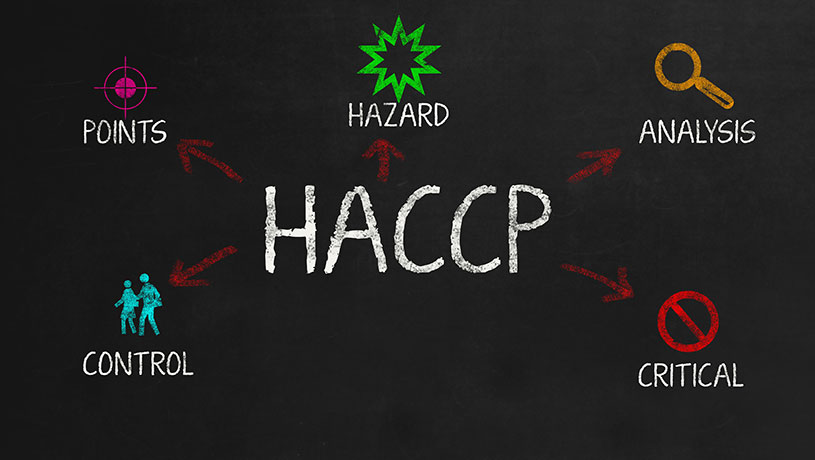What is HACCP?
HACCP or Hazard Analysis and Critical Control Points is a systematic preventive approach used to address food safety through the analysis and control of physical, chemical and biological hazards. It is conducted from raw materials production, procurement, manufacturing, and distribution to consumption of the finished product. It designs measures to eliminate or reduce risks (food hazards) to a safe level that cannot cause harm to the consumer.
History of HACCP
HACCP was developed in the 1950s by a team of engineers and food scientists from National Aeronautics and Space Administration, the Natick Research Laboratories, and the Pillsbury Company. This team developed a system that would ensure food safety for the manned space program. In 1971, this concept was formally presented by Pillsbury at National Conference on Food Protection sponsored jointly by the American Public Health Association and Food and Drug Administration. Initially, HACCP consisted of three principles. These included determination of the critical control points to control identified hazards, the establishment of a system that identifies and monitors critical control points and hazard identification and assessment in food from farm to fork.
The FDA then incorporated HACCP concept into acidified and low acid food regulations in 1974. The development was in response to the outbreak of Clostridium botulinum poisoning in the canned food products. In 1993, the Codex Alimentarius Commission provided its first HACCP standard thus establishing the first international definition for HACCP. This was followed by formation of other private and national food safety standards. Specifically, it led to the formation of Organizations for International Standard (ISO). Under the HACCP, ISO developed food safety management system (FSMS) programs to ensure safety in the food chain.
Principles of HACCP
HACCP is based on seven principles:
1. The first principle stresses looking at dangers. This is the place possible dangers are identified for all stages in progress. In an inside food safety survey, an investigator can identify segments that are manufactured, natural or physical in nature. Threats can show up as living beings, harms or physical particles.
2. Resulting in identifying potential dangers, the second principle continues forward to choose the control centers in which contamination can be maintained a strategic distance from. Setting up control centers can be as fundamental as portraying out a methodology, for instance, unrefined thing handling, cooking, squeezing and transport.
3. The third principle unites the thoughts driving the first and second principles. At this level, highest and lowest limits are set for each one of the specific control centers to prevent corrupting. The most major delineation is minimum warmth settings for cooking specific tasteful things.
4. The fourth HACCP food safety principle deals with the third principle by describing techniques and individuals accountable for checking control centers. This suggests there is clear documentation to take after on how every movement of creation is looked at and who plays these standard checks.
5. The fifth principle revolves around taking helpful measures in the occasion that checks exhibit that standards are not met. This may include retreating to the essential period of the creation methodology or absolutely hurling out perhaps contaminated things already they can be pushed out to clients. Therapeutic advances must be identified early with the objective that it is clear what steps ought to be taken in the event of spoiling.
6. The sixth HACCP food safety audit principle incorporates checking the plan of watching itself. There should be a steady strategy set up that researchers rigging or instruments that are required for watching the creation method. Watching devices and the different parts of the devices used as a piece of creation should be in top condition to make checking effective and productive.
7. The seventh and last principle turns around documentation. All parts of the system from risk examination to checking contraption evaluation should have point by point rules set up. Moreover, these should be established on standards that rely upon recognized and showed scientific research.
These are the fundamental principles behind a HACCP food safety control which any person who is responsible for food availability in any business setting should a great many. Get the best authorities in your general region to help you in making the checking system that you require.

